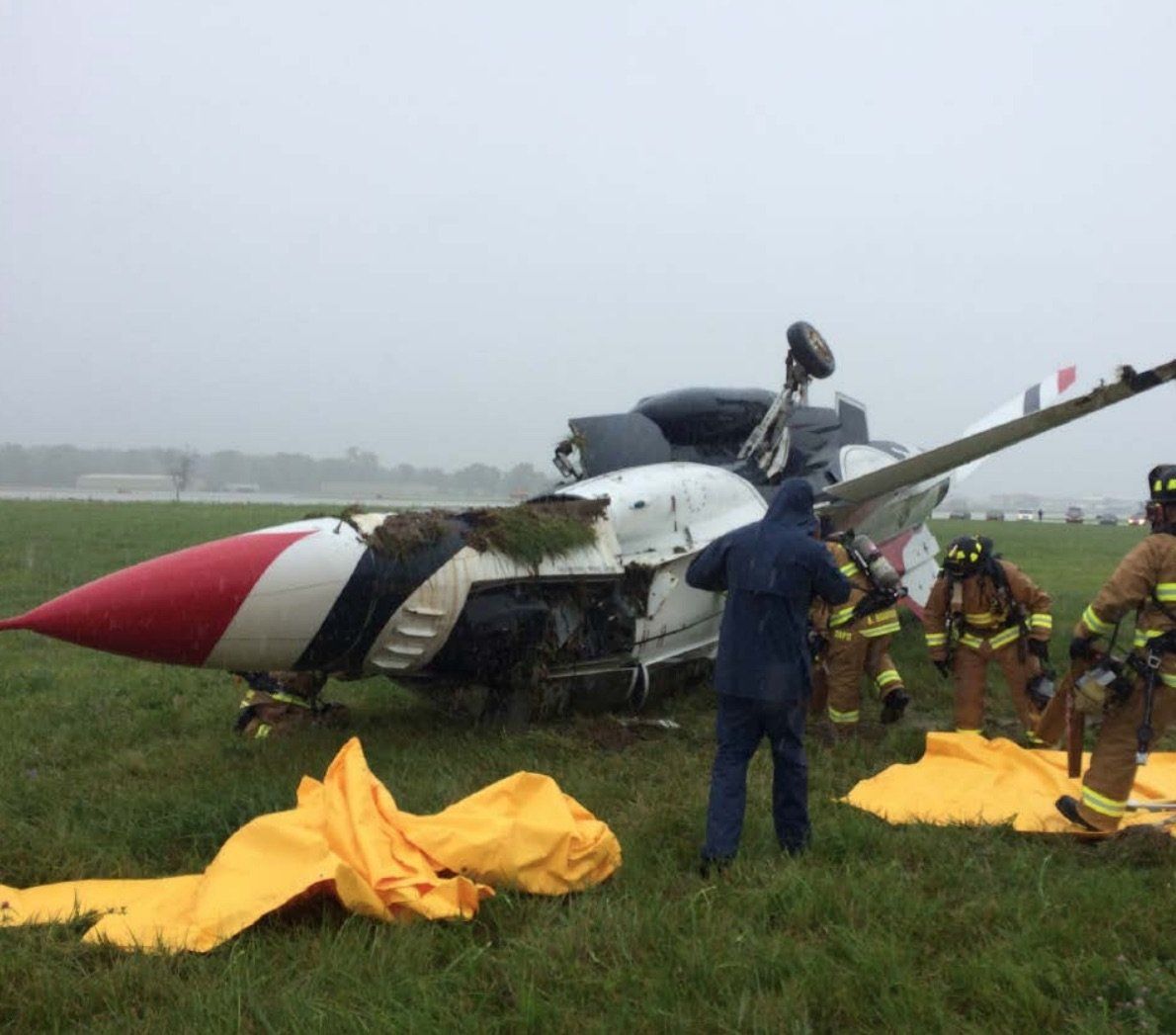
The U.S. Air Force F-16, assigned to the Thunderbirds, that crashed following a runway overrun at Dayton International Airport in June was more than 40 knots too fast on final approach and did not touch down until nearly 5,000 feet down the runway. The $29 million aircraft was entirely destroyed when it flipped after departing the paved surface area. The Air Force Accident Investigation Board (AIB) concluded, “The cause of this mishap was landing with excess airspeed and insufficient distance to stop the mishap aircraft on the wet runway. Mishap aircraft had sufficient fuel to divert to a Visual Flight Rules (VFR) alternate. The mishap pilot did not elect to go around.” In addition to being 43 knots fast over the threshold, Capt. Eric Gonsalves, the pilot, did not pull the throttle to idle until the aircraft had flown 3,000 feet down the runway, according to the AIB. The report further found that Gonsalves did not properly follow the maximum performance braking procedure.
Gonsalves and Technical Sgt. Kenneth Cordova, a non-flying Thunderbirds crew member, were conducting a “familiarization flight,” where a backseat passenger is introduced to the capabilities of the aircraft and maneuvers typically flown by the team. Gonsalves is the team narrator and was the pilot of the number 8 aircraft, so he conducted most of the team’s familiarization and incentive rides for members of the media and VIPs. The team practice was cancelled the day of the accident due to bad weather in Dayton, but the familiarization flights were left on the schedule. Upon return to the airfield, after flying an instrument approach, Gonsalves was unable to see the runway due to water pooling on the canopy—a known aerodynamic quirk of the F-16. The pilot conducted a missed approach and held for 15 minutes to await better weather. The crash occurred after the second approach. Gonsalves received moderate injuries. Cordova was not injured.


































